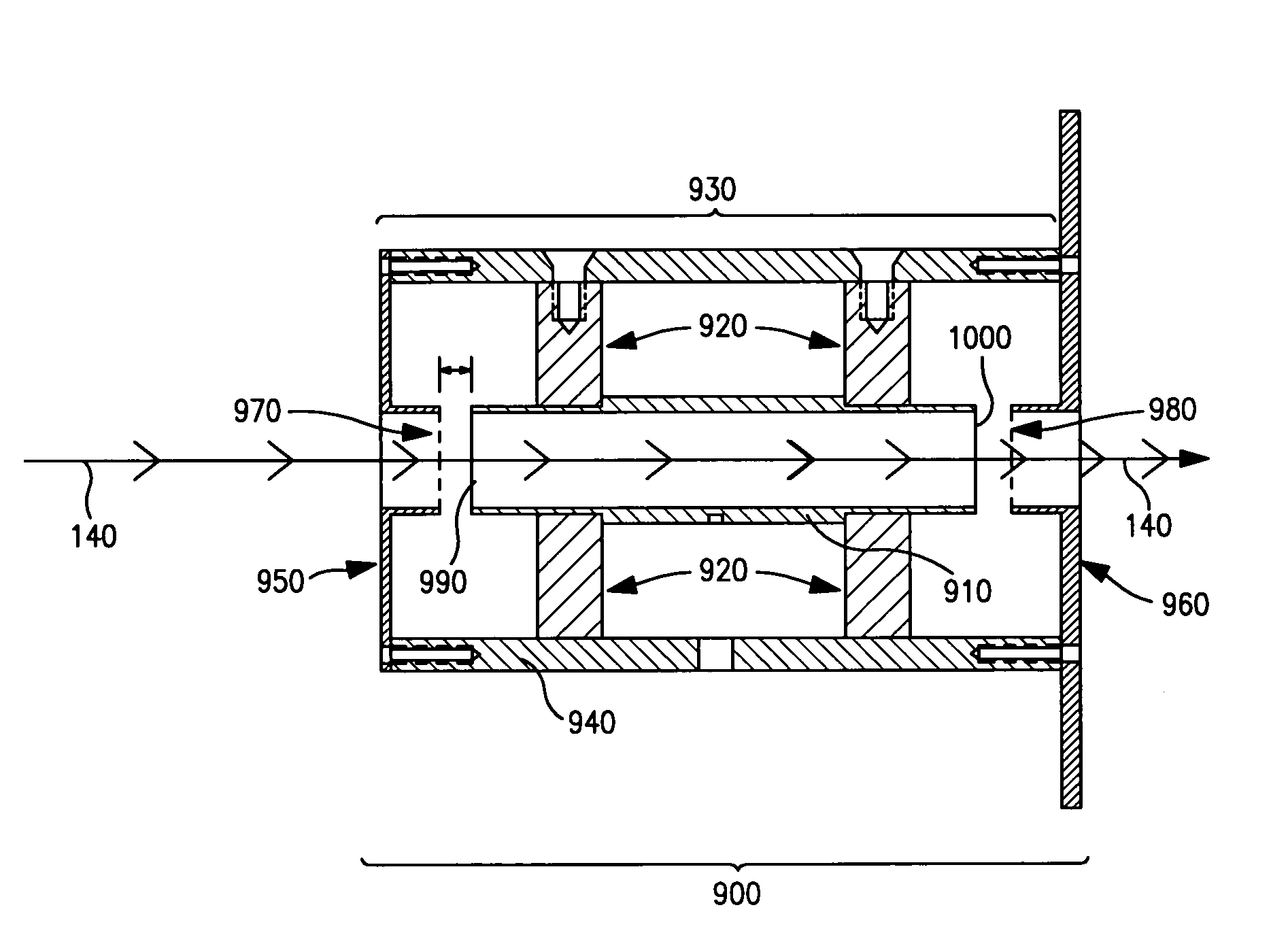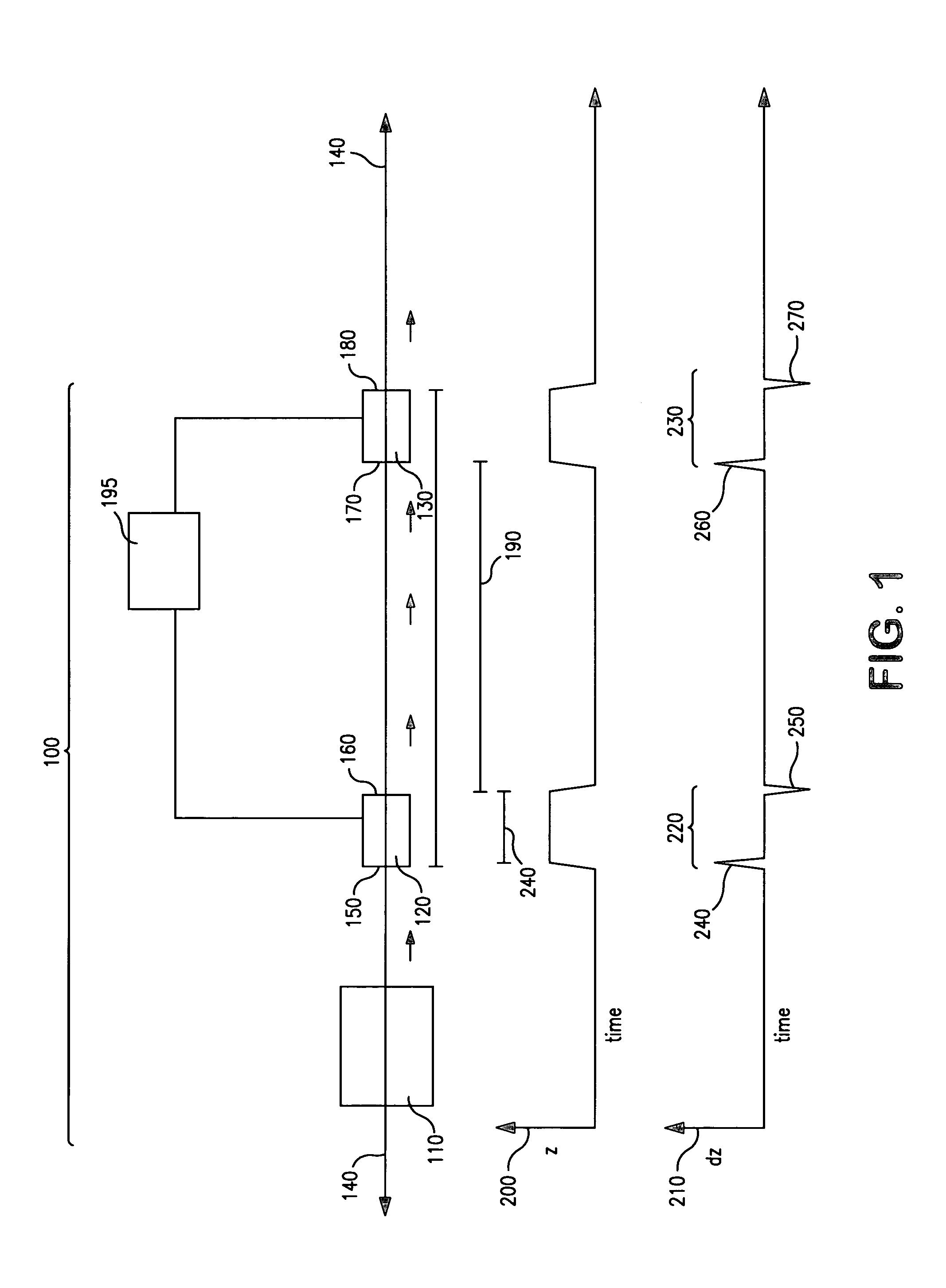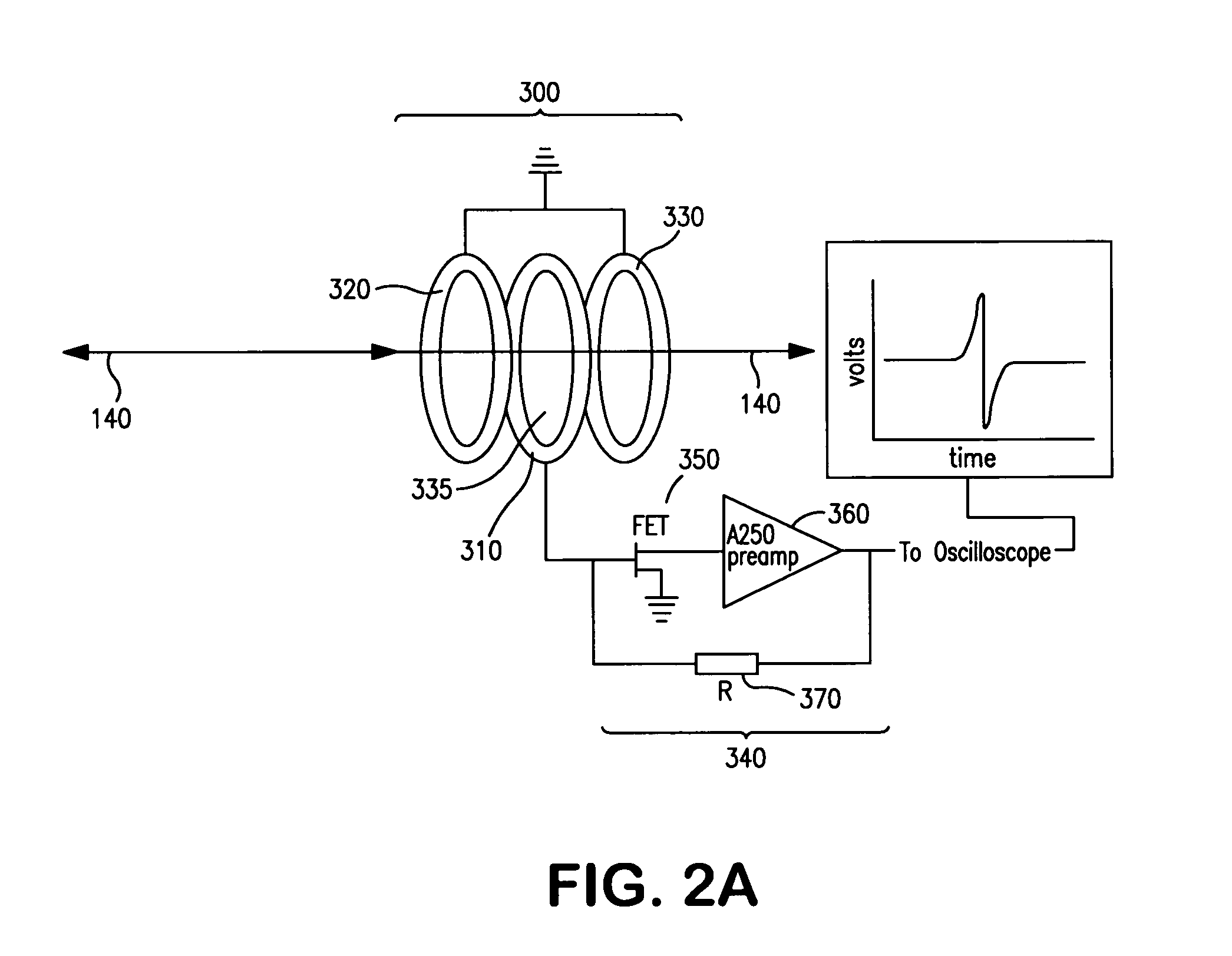Inductive detection for mass spectrometry
a mass spectrometry and inductive detection technology, applied in the direction of electron/ion optical arrangement, particle separator tube details, separation process, etc., can solve the problem of low overall efficiency of current mass spectrometers, unrealized quantitative analysis potential of biological samples, and low overall efficiency
- Summary
- Abstract
- Description
- Claims
- Application Information
AI Technical Summary
Benefits of technology
Problems solved by technology
Method used
Image
Examples
example 1
Non-destructive, Inductive Detection of Polypeptides and Oligonucleotides
[0128]The use of the present invention for the analysis and detection of biopolymers was tested by analyzing liquid samples containing known quantities of polypeptide and oligonucleotide analytes. The ability of the present invention to analyze and detect charged particles generated from biopolymers without destroying them or substantially altering their trajectories was evaluated. Further, the independence of the sensitivity of the inductive detectors of the present invention with respect to gas phase ion velocity was directly confirmed.
[0129]Gas phase ions from liquid samples containing known quantities of polypeptide and oligonucleotide analytes were generated using a MALDI ion source and subsequently analyzed by a linear time-of-flight analyzer. Gas phase ions were generated upon illumination of a sample containing analyte by a short (≈10 ns) laser pulse, accelerated by an ion accelerator and passed through...
example 2
Ion Detection in Coincidence
[0136]The ability of the present invention to provide ion detection in coincidence was evaluated by analyzing liquid samples containing known quantities of polypeptide analytes using two inductive detectors sequentially positioned along the charged particle detection axis. The coincidence measurements confirm the ability of the inductive detectors to sensitively detect packets of ions without destroying them. In addition, the measurements show that the present invention is capable of efficient multiple detection of packets of ions.
[0137]Ions from polypeptide analytes were generated using a MALDI source and accelerated by an electrostatic potential applied by an electrode. A portion of the ions accelerated were sampled by an aperture positioned approximately 10 cm from the ion source. Upon translating through the sampling aperture, the ions were conducted through an analysis and detection region, wherein the ions passed through the axial bore of a first in...
example 3
Time-of-Flight Measurements Using a Fully Shielded Inductive Detector
[0143]In another aspect, the present invention comprises fully shielded inductive detectors having a shield element that entirely surrounds one or more sensing electrodes. The ability of fully shielded inductive detectors of the present invention to detect and analyze the flight times of charged particles generated from biopolymers was evaluated. Use of fully shielded inductive detectors provides better sensitivity and more accurate timing resolution compared to partially shielded inductive detectors.
[0144]FIG. 10 is a schematic diagram illustrating an exemplary fully shielded inductive detector of the present invention. As shown in FIG. 10, fully shielded inductive detector (900) comprises a tubular sensing electrode (910) having an axial bore concentrically positioned about charge detection axis (140), an insulator (920) and a shielding element (930) having a axial bore concentrically positioned about charge dete...
PUM
 Login to View More
Login to View More Abstract
Description
Claims
Application Information
 Login to View More
Login to View More - R&D
- Intellectual Property
- Life Sciences
- Materials
- Tech Scout
- Unparalleled Data Quality
- Higher Quality Content
- 60% Fewer Hallucinations
Browse by: Latest US Patents, China's latest patents, Technical Efficacy Thesaurus, Application Domain, Technology Topic, Popular Technical Reports.
© 2025 PatSnap. All rights reserved.Legal|Privacy policy|Modern Slavery Act Transparency Statement|Sitemap|About US| Contact US: help@patsnap.com



